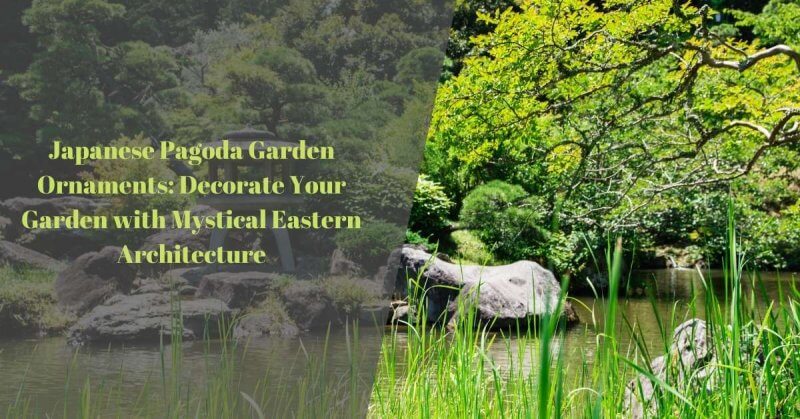Creating a beautiful garden is a lengthy and difficult process. Even if yours already looks lovely, with the right upgrades you can turn it into the most appealing aspect of your home. There’s a variety of ways to spice up your outdoor décor, ranging from cushions, lighting fixtures, and flower arrangements to fire pits, koi ponds, etc. And currently, one rising trend in modern outdoor décor is the Japanese pagoda lantern. Here’s what you should know if you’re considering this type of outdoor decor.
Thank you for reading this post, don't forget to the best blogger Guy About Home who offers the best garden and home improvement tips! If you are a home decor and design fan, don't miss the tips on home ideas. If you are a home garden owner, then you might be interest in our complete guides to house plants!
What Are Pagoda Ornaments?
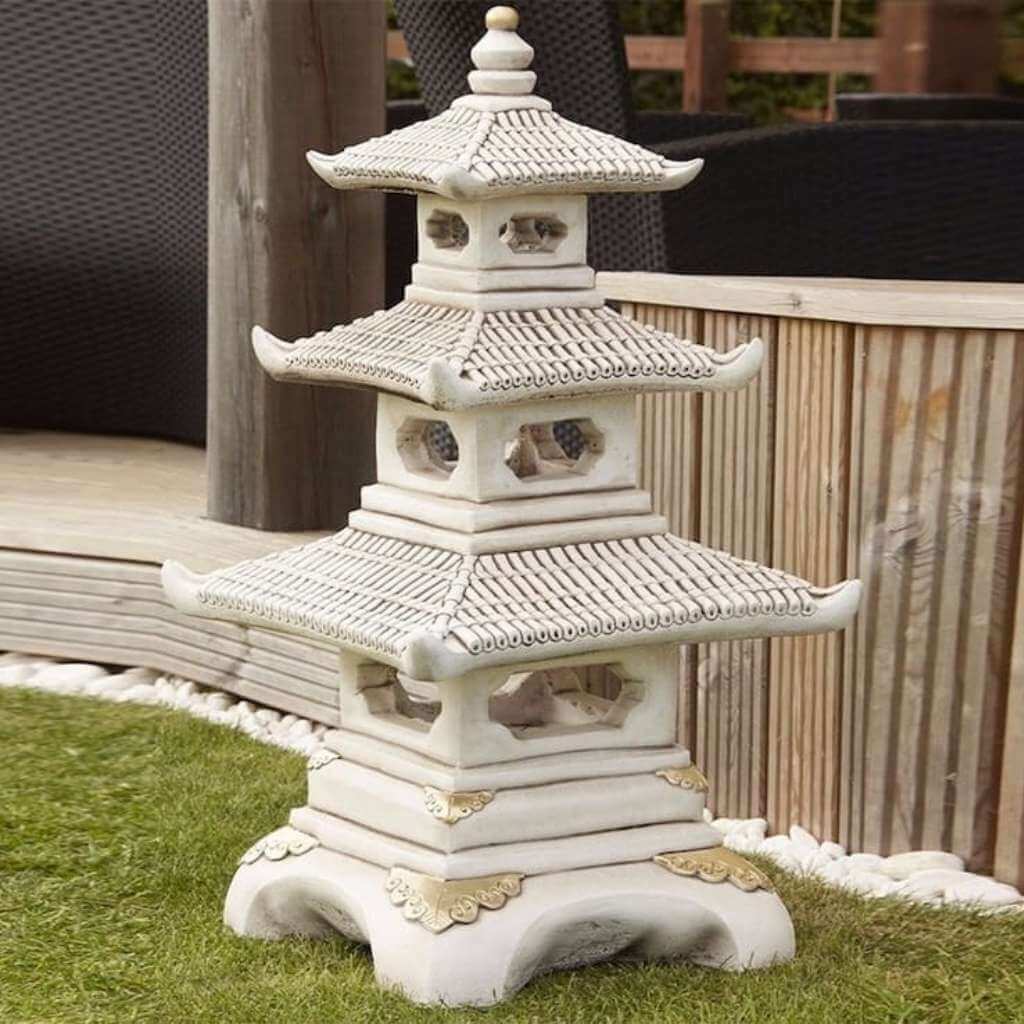
Source: gardensite.co.uk
There’s a wide range of garden oriental ornaments inspired by the Japanese pagoda. These durable, hand-crafted works of art are designed to withstand all weather conditions. They give your garden a dose of classy elegance and are closely tied to the Buddhist culture. Despite their natural stone appearance, these ornaments have a quite manageable weight, making it easy to reposition them around your garden.
Although these ornaments have existed for countless years in a variety of shapes, they have retained the same fundamental meaning:
- Instilling tranquillity;
- Exhibiting Buddhist ideals;
- Reflecting the beauty of nature.
The first pagoda lanterns were made for religious purposes. Early in the 7th century, people in China used old silver or stone lanterns to illuminate Buddhist temples prior to their importation to Japan. As gifts to the Buddha, the lights in these lanterns symbolised Buddhist teachings that may be used to dispel the darkness that came from ignorance. They were also employed by the Japanese in their Shinto temples and shrines.
Pagoda garden ornaments started appearing in private houses and gardens starting in the late 16th century, and they are incredibly popular today.
What Is the Meaning Behind Pagoda Lanterns?
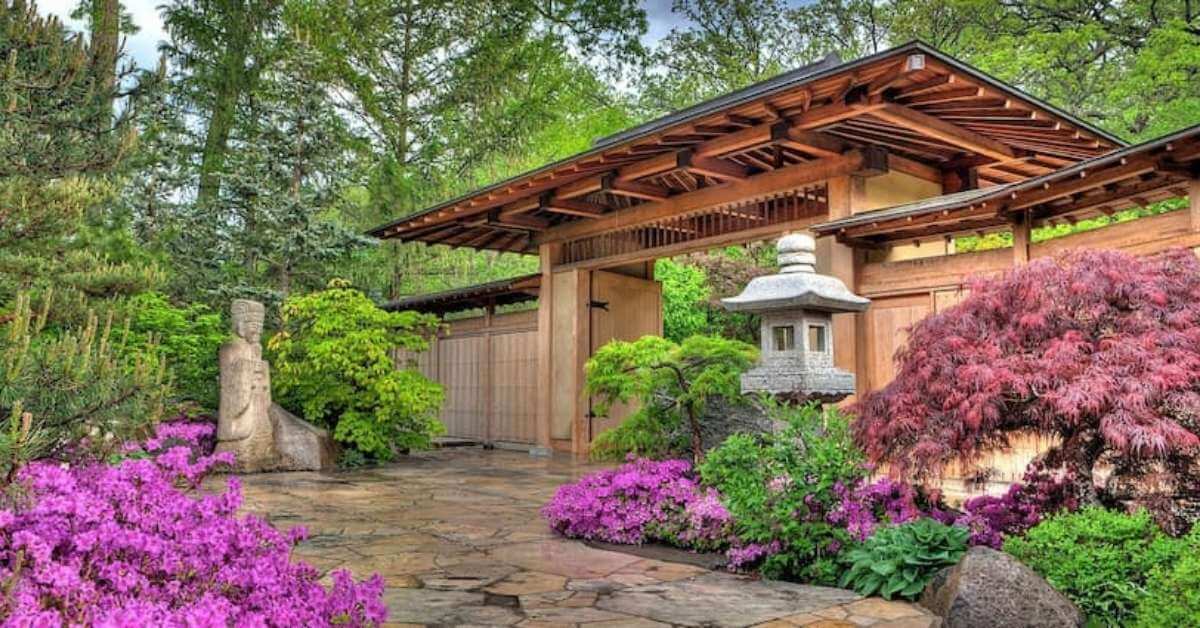
Source: stoneforest.com
People worldwide use pagoda lanterns as common garden accents to draw attention to a particular landscape design, add some style to their home, or illuminate garden paths. However, they also have a variety of meanings:
- Apart from their function as symbolic sacrifices to Buddha, pagoda lanterns are believed to guide spirits home during Japan’s Obon Festival.
- They demonstrate the value of a calm location for prayer or meditation. They emphasise nature in your garden and bring harmony and balance.
- According to their original form, pagodas of five stories symbolise the five elements of Buddhist cosmology: earth, wind, fire, water, and void. This deeper significance is still present in certain pagoda lanterns. A conventional pagoda’s seven floors were a reflection of Buddhism’s seven riches and seven northern lights.
- Japanese pagoda statues illustrate the value of appreciating the beauty of the natural world despite its flaws.
- The many designs of pagoda lanterns each have their own special significance. Some of them depict the cycle of life, others refer to life after death, and some symbolise the five elements.
- Some lanterns resemble stylised lotuses, which are regarded as symbols of fortune and professional advancement in Japanese culture.
What Are Japanese Pagodas?
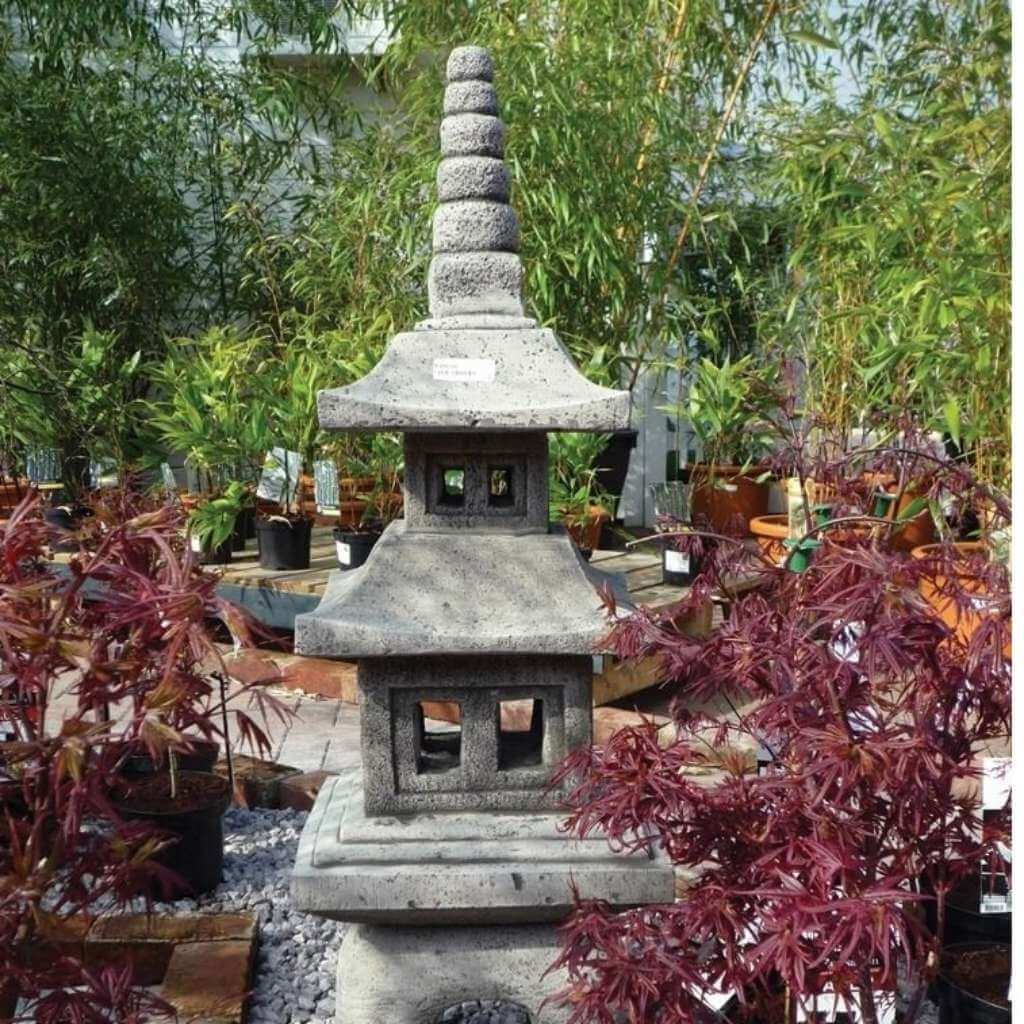
Source: amazon.co.uk
Pagoda garden statues are inspired by the famous Japanese pagoda buildings. These are stunning, tall, multi-story buildings having a square foundation, several levels, and sloping roofs. They also include spires. Even though pagodas may be found all across Asia, Japan boasts some of the most stunning ones. A trip to this extraordinary and remarkable nation wouldn’t be complete without taking in at least one of these architectural marvels, which have evolved into the icons of Japan throughout the years.
These recognisable and beautiful buildings have come to represent Japanese culture. They are an integral part of Japan in people’s minds, along with samurai and sushi. One of the ideas you have in mind when you think of Japan is the shape of a large, multi-tiered pagoda with cherry blossom trees all around. The real thing is much more stunning and amazing in person.
Other Ways to Bring an Oriental Feel to Your Garden
To complement your pagoda garden statues, you can add other types of oriental garden décor. The following suggestions will upgrade your outdoor space and look amazing next to your pagoda lanterns.
Bamboo Screens
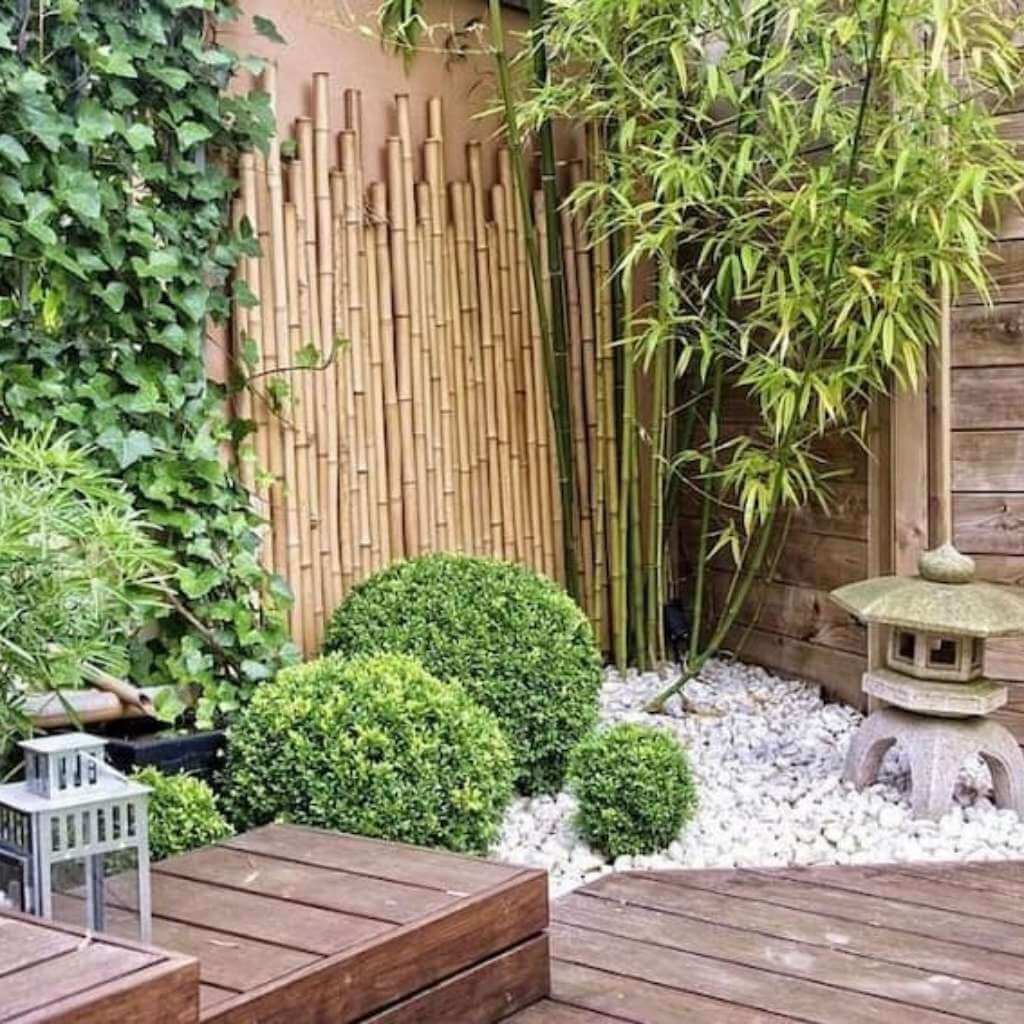
Source: istockphoto.com
Bamboo screens allow you to quickly, affordably and effectively transform your garden. They are a terrific way to separate the garden into different zones or cover plain walls since they give it a tropical atmosphere. They help define the space around garden ponds in a natural way and provide a beautiful background to grow plants against. Bamboo cane screens can be easily found at your local garden centres and DIY stores.
Japanese Plants
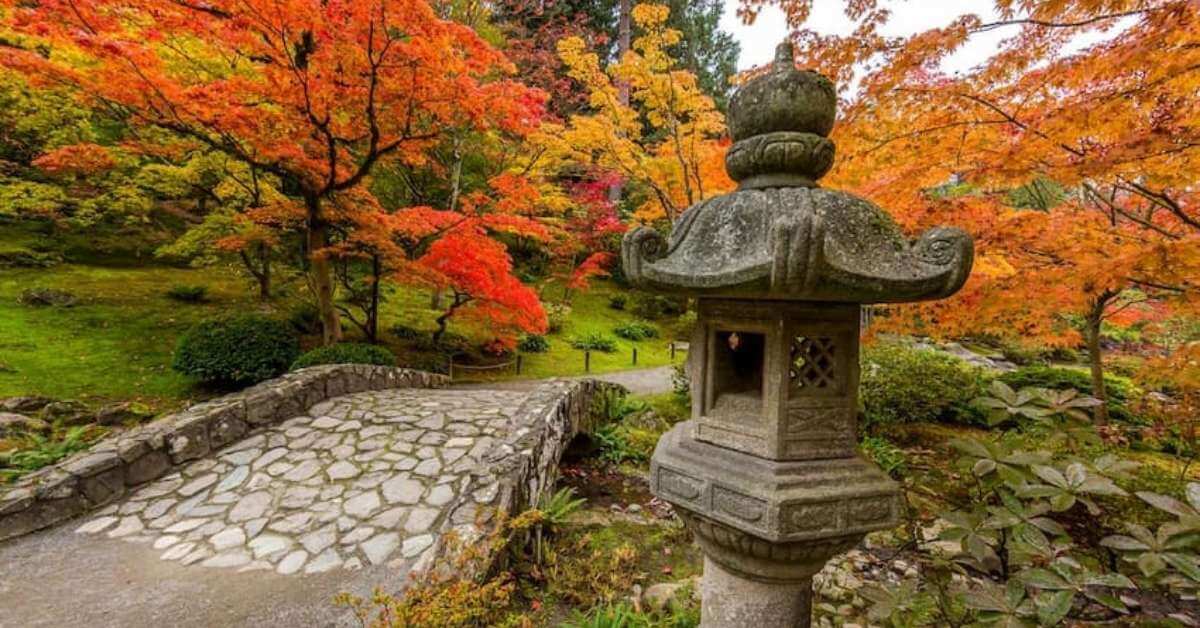
Source: handyman.net.au
When I first started planting the garden, my goal was to maintain it lush and green while also adding plenty of texture. When I went plant shopping, I concentrated on tough, perennial, or evergreen shrubs and grasses so that the garden would require little upkeep and be colourful all year. I adore planting ferns and other natural grasses for height. Acer, a Japanese maple tree with vivid burgundy foliage is another one of my favourite plants.
My advice when selecting the plants for your zen garden is to search for the types of plants that you want, check the soil it grows best in, and compare the quantity of sunlight the plants need with the location you want to place them. Then, while you’re shopping, you may concentrate on the right plant style.
Here are some plant ideas for an oriental garden:
- Japanese Maple (Acer);
- Aucuba Japonica;
- Sago Palm;
- Magnolia (my favourite!);
- Cherry Blossom;
- Black Mondo Grass;
- Lilies.
Rockeries and Water Features
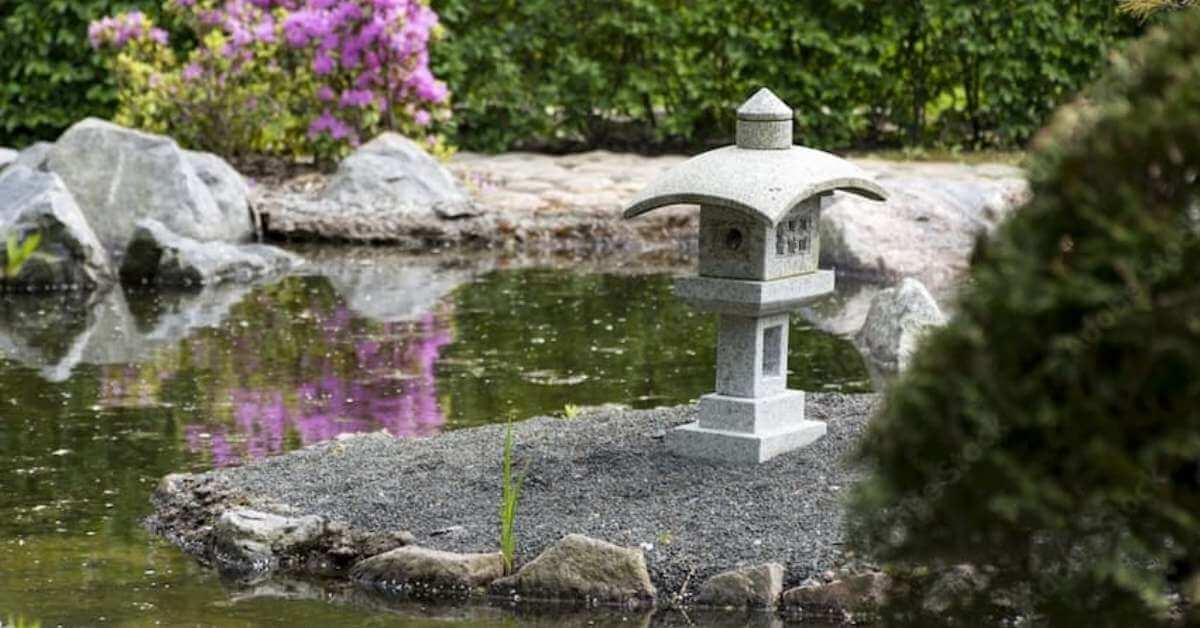
Source: stock.adobe.com
If you’re interested in the aesthetic rock and stone look, I suggest including certain accents from Southern China. Chinese gardens frequently use rocks, which are arranged in a way that appears random but is actually precisely planned to evoke the sensation of true nature and random order.
They are frequently positioned next to bodies of water, occasionally to produce waterfalls, tiny fish ponds, and even bigger lakes where the space allows for it. The fact that no two rocks ever seem to be the same gives the impression that, despite the fact that you know you are in a carefully planned garden area, you could be strolling somewhere completely wild.
If this piqued your interest, then it’s time to shop the gorgeous garden oriental ornaments and bring some Eastern mysticism into your outdoor space.


